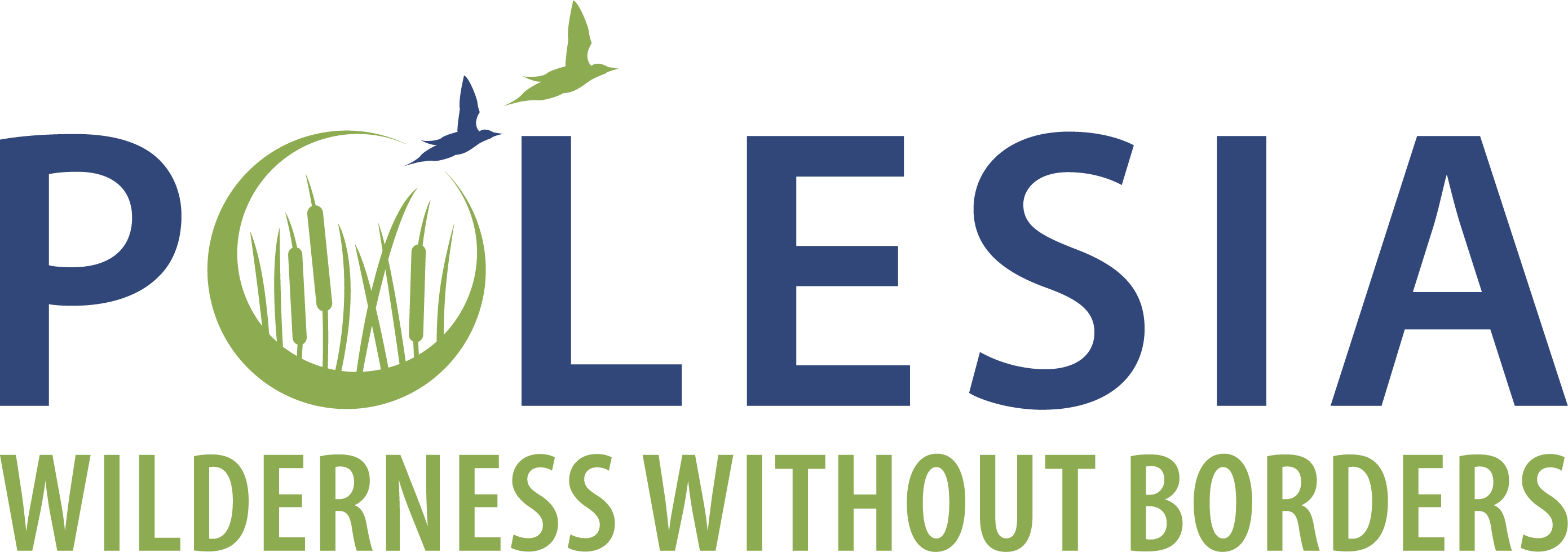Polesia’s wetlands and people: depending on each other
World Wetlands Day is celebrated around the world on the 2nd of February. This date is an opportunity to draw public attention to the global importance of different types of wetlands and their exceptional role in ensuring human well-being. Covering 18 million hectares, Polesia is not just Europe’s largest wetland area but also home to millions of people. The interdependence between Polesia's nature and the region's inhabitants is mutual: the quality of life, health and well-being of people are in many aspects determined by wetlands, while natural ecosystems may degrade and disappear without consistent protection measures.
Wetlands play a key role in storing and purifying freshwater, maintaining biodiversity and mitigating climate change. Some scientists say that life on Earth itself depends on wetlands because their ecosystem services are vital. The global problem is that they are degrading and disappearing at an extremely rapid rate – about 85% of the world’s wetlands have been lost, and this process has speeded up in the last 30 years due to human economic activities and climate change.
A vast belt of European lowland bogs that once stretched from France to western Siberia has been largely drained. In Polesia, however, a remnant of this ancient bog massif has been preserved. The inhabitants of Polesia are sometimes metaphorically referred to as ‘the people of the bog’. And life in the marshes is not easy at all: lack of arable land and communication routes, low crop yields, epidemics and other unfavourable factors led people to reclaim land from the marshes for economic purposes. Only in the last period of massive reclamation, from the 1960s to the 1980s, about 3 million hectares of wetlands were drained in Polesia. The results of this activity were not as expected: the newly reclaimed lands remained fertile and highly productive for several years. Over time, however, they created more problems than benefits and were often abandoned.
From improvement to destruction and back
Drainage of peatlands in Polesia has gradually led to desertification. In addition to depleted peatlands, the region has a large amount of peat soils, where the peat degrades very quickly under conditions of low groundwater levels. On 223,000 hectares of agricultural land, the soil has been completely destroyed, and almost the same area has been degraded by peat extraction, with the process of peat layer destruction continuing. If these anthropogenic changes are not stopped today, they will lead to very low yields and a rapid decline in biodiversity in the near future.
Draining wetlands has a negative impact on the ecology of adjacent areas. Wetlands lose their role as stabilisers of the hydrological conditions in the entire catchment area, small rivers and watercourses dry up and entire ecosystems are degraded. Recent research has shown that a 50-70 cm drop in groundwater levels results in a significant loss of biodiversity. It also increases the eutrophication of rivers and lakes. Every year, about 1.5 million tonnes of mineral and 700,000 tonnes of water-soluble organic substances flow from the drained areas of Polesia into the Black Sea via the Pripyat and Dnieper rivers.
Observing and comparing Polesia’s disturbed wetlands with intact ones, it is easy to see why preserving and restoring such ecosystems is an investment in the well-being of the people who live in this region.
Despite massive drainage, Polesia is still rich in undisturbed and highly functional wetland ecosystems. Bearing in mind that each hectare of intact wetlands absorbs up to 15 tonnes of carbon annually, this region makes a globally significant contribution to climate change mitigation.
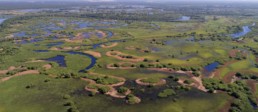
At the same time, intensive land reclamation for peat extraction and agriculture is paving the way for the emergence of many areas that no longer provide any economic benefit, while emitting between 5 and 15 tonnes of carbon dioxide per hectare per year. Ecologists estimate that rewetting 200,000 hectares of disturbed peatlands that are not used for agriculture or peat extraction will reduce greenhouse gas emissions by 1.5 million tonnes of carbon dioxide annually. Remarkably, rewetting is one of the cheapest ways to decrease CO2 emissions. Thus, wetland restoration and subsequent accurate accounting of greenhouse gas emission reductions in Polesia could be an important step for the countries that share this region to enter the global carbon market and sell free emission quotas.
Water vs. fire
The drained and degraded agricultural land, which is increasing in area, is a source of another negative phenomenon – wildfires. Initially, groundwater levels have been lowered artificially, but the situation is worsened by mild, snow-free winters and prolonged periods of warm, dry weather, which have become more frequent in recent years. Fighting wildfires costs a lot of money and resources every year. Peatland fires are particularly dangerous and difficult to detect and extinguish. Large fires are a burden on the economy, they threaten ecosystems and, of course, human life and health.
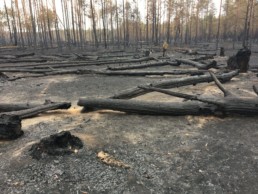
Particles released into the air by wildfires are a dangerous air pollutant. It was these fires that led to the Ukrainian capital, Kyiv, being at the top of the list of cities with the highest atmospheric pollution in 2020 and 2021. Of particular concern are large fires in the Chornobyl Exclusion Zone, a highly contaminated area. After being drained several decades ago, its territory burns very often, releasing not only greenhouse gases but also radioactive substances, which then spread with the wind and pose a threat to human health.
Experts say the optimal solution to the problem of Polesia’s devastating wildfires is obvious: water can’t burn, so it’s necessary to bring water back to the drained areas by restoring natural or near-natural hydrological regimes. A study carried out as part of our project has shown that by preserving and restoring intact, well-hydrated peatlands, we can create natural barriers to large, devastating fires.
Natural hydrological regimes allow wetlands to perform one of their most important functions – the accumulation and purification of fresh water. The significance of Polesia’s water resources is immense. Feeding major rivers such as the Pripyat or the Dnieper, Polesia’s wetlands provide drinking water for two thirds of the Ukrainian population. If the groundwater level in the marshes drops, it could be catastrophic for millions of people. But local rural communities in Polesia are already experiencing the consequences of systematic wetland drainage. Water levels in people’s wells are falling, and the lack of water for daily needs is evident. Regional and local authorities often try to solve the problem by building artificial reservoirs, but it costs millions of dollars to build and operate them. Experts estimate that the cost of equipping a small artificial reservoir would be enough to rewet all of Polesia’s disturbed wetlands and provide a natural water supply for the region’s inhabitants. There would be no need for artificial reservoirs.
Natural resources: to take without destroying
Wetlands provide people with valuable resources that, if managed sustainably, can help to improve the well-being of local people and create new livelihoods and jobs. As noted above, the practice of draining wetlands for agricultural use brings only short-term benefits: within a few years, as yields decline or a peat deposit is developed, the area turns into wasteland. Nowadays, the idea of using the natural resources of Polesia’s wetlands without draining them, or after restoring the water regime, is becoming more common. Here are some examples.
Reeds grow abundantly in both undisturbed and restored wetlands. This plant can be used as a raw material for an environmentally friendly and efficient fuel that can potentially be supplied to small local businesses or power stations. Such an enterprise will be profitable if it serves customers within a radius of seanout 30 kilometres.
Cranberries are another important natural resource of the Polesia bogs. In the Almany Mires Nature Reserve alone, their annual amount is estimated at 6.7 thousand tonnes, of which up to 2.5 thousand tonnes are harvested. Every season, berry pickers earn more than 1 million dollars in total selling the cranberries harvested in the Almany Mires.
The wetlands stand out among other natural systems for their high biodiversity. Medicinal plants are particularly prominent. Many corners of Polesia, far from cities, transport routes and large industrial enterprises, are ecologically favourable enough for the collection of such valuable raw materials. According to the latest estimates, the potential for harvesting wild medicinal plants in Pripyat Polesia is currently used by only 1%.
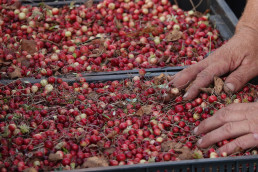
The development of local industries for the processing of natural raw materials obtained from Polesia’s wetlands would create new jobs and produce goods with high added value. It would be economically viable and sustainable in the long term, as it focuses on a local renewable resource and doesn’t involve destroying the ecosystem for quick profits.
Polesia invites
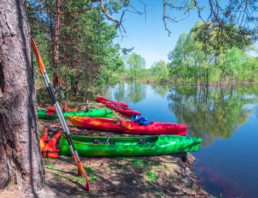
Polesia’s wetlands with their unique flora and fauna are an extremely promising object of ecological tourism, which is often at the top of the list of visits for domestic and foreign wildlife enthusiasts. Innumerable birds, among them rare species like the Great Snipe, the Short-eared Owl, the Black Stork, the Common Crane as well as globally threatened species such as the Aquatic Warbler and the Greater Spotted Eagle, nest in the local wetlands. The river floodplains are the main resting place for millions of migratory birds in spring and autumn. This makes Polesia an important destination for birdwatching in Europe in any season of the year. Numerous free-flowing rivers with picturesque surroundings are very attractive for amateurs of ecotourism, and they can be especially impressive during seasonal floods.
Unfortunately, due to the war in Ukraine and the difficult political situation in Belarus, the full development of the tourist potential of Polesia is currently impossible. However, this promising area should by no means be discounted.
Unique nature – special people
Over centuries, Polesia’s wetlands played a crucial role in the formation of the local culture – from mythology and rituals to crafts and cuisine. Living in an exceptional landscape, which for centuries limited their communication with the rest of the world, the inhabitants of Polesia have preserved many phenomena of traditional culture which are now included in national and international lists of cultural heritage. Even today, in the 21st century, here we find a rich folklore, uniquelocal folk singing techniques and a very special dialect that some linguists consider to be a separate language.
Traditions like wild forest beekeeping, making a boat from a solid tree trunk and skillful water transport management, gathering and using wild medicinal herbs, making dishes from berries, mushrooms or river fish are transmitted from generation to generation only in close connection with the landscape and quickly disappear outside it. There is no doubt that the identity of Polesian culture and day-to-day life was formed largely thanks to the wetlands, and their loss would cause great damage to cultural diversity.

Wetlands have shaped the lives of local people for centuries and continue to do so today, although this is not always apparent at first glance. The dramatic consequences of the loss of these valuable and remarkable ecosystems are indeed visible. Once upon a time, people had to submit to the forces of nature. Today, we have many tools and technologies to subdue it. But we must be wise enough to use modern means to live in a healthy balance with nature, because we are more dependent on each other than ever before.
The project “Polesia – Wilderness Without Borders” is part of the Endangered Landscapes & Seascapes Programme and is funded by Arcadia. The project is coordinated by Frankfurt Zoological Society (FZS).
